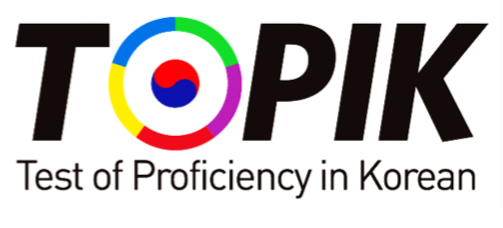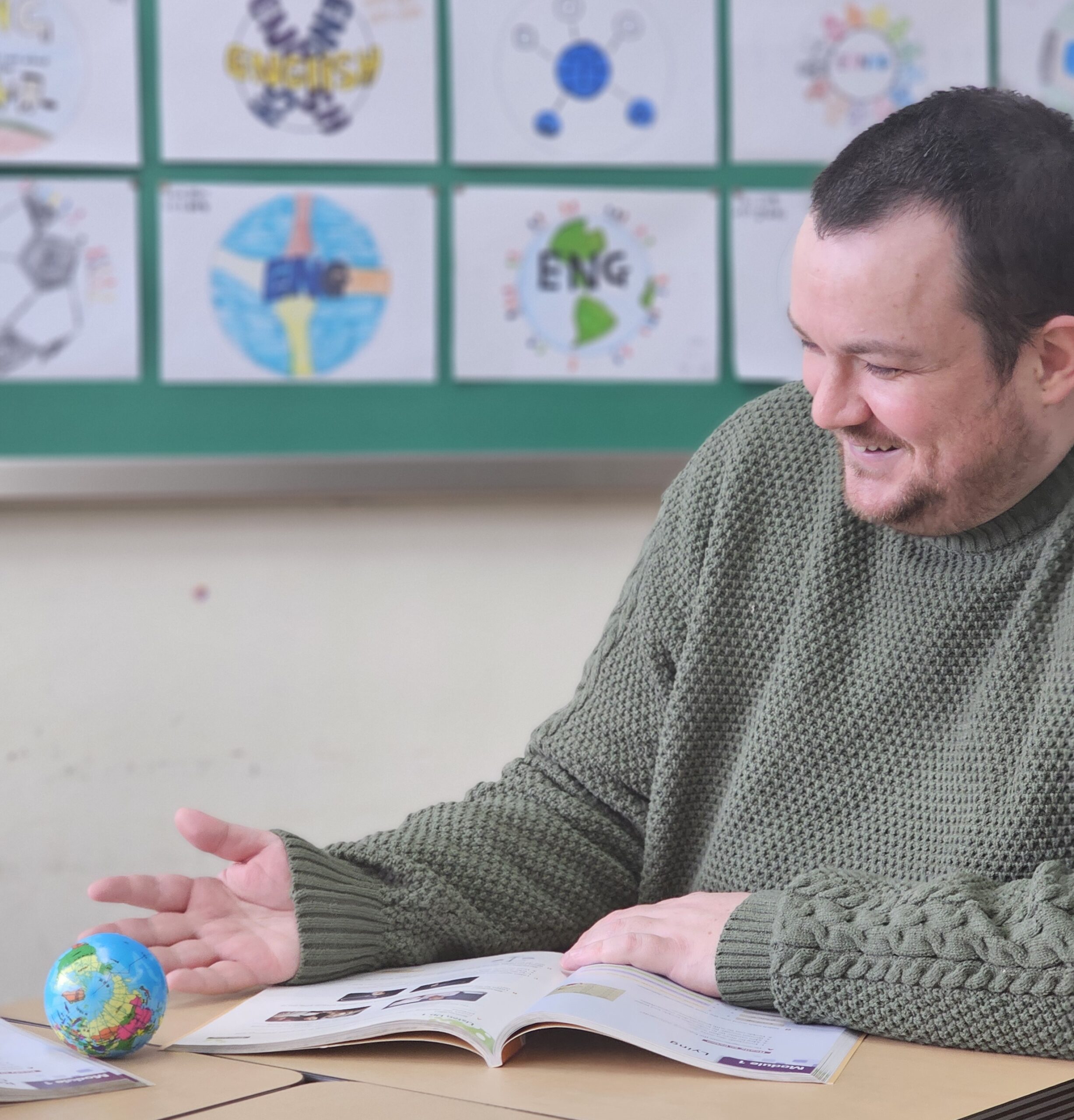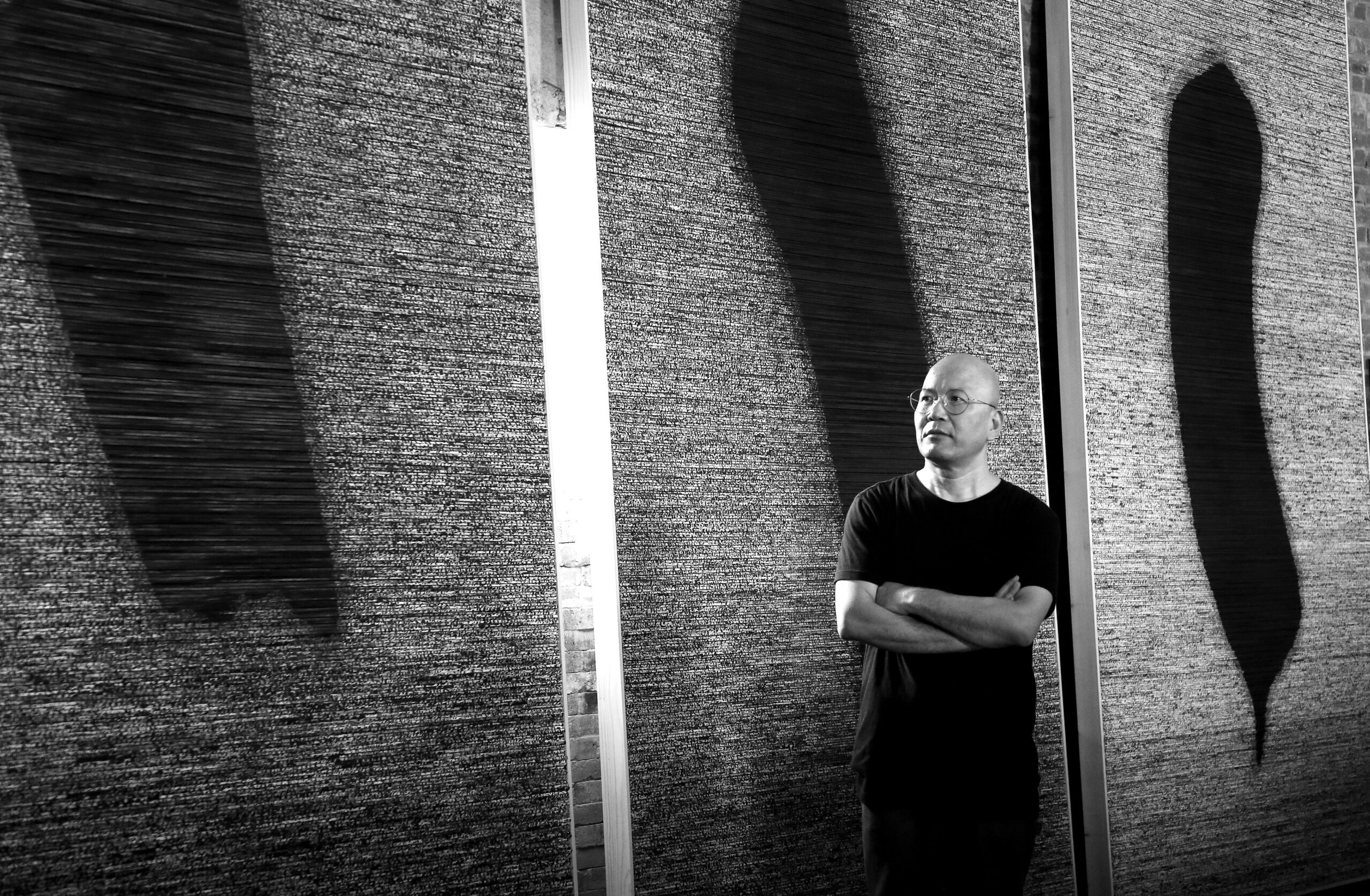Where Will I Be Spread? – January 2025
By Kang Hyunsuk (Jennis)
A few years ago, I was captivated by an intriguing and unique artwork at the Gwangju Museum of Art. The wall was filled with long, short, thick and thin horizontal lines, each representing the Chinese character for the number one (一). What was fascinating was that the audience could actively participate in the artwork by writing their own “one,” and these individual ones piled up to form the piece titled Life: I Draw Myself. This collection of diverse lives was created by conceptual artist Jeong Gwang-hee.
In elementary schools in Korea, students experience writing with black ink during art class. They learn how to hold a brush and practice drawing long, straight lines without wobbling. It may seem easy to draw a single line, but this simple act is both the beginning and the end of calligraphy. Similar to painting, the first step often begins with a single, straight line. A long horizontal line becomes the Chinese character for “one.” Although the ink used is black, the work carries a striking, modern art vibe. Through this experience, I became deeply impressed by Jeong Gwang-hee’s artworks. That’s why, in the January
2025 installment of People in the Arts, I wish to introduce him to our readership. The interview was conducted in his studio in Damyang, and the following is the conversation I had with the artist.
Jennis: Thank you for agreeing to this interview for the Gwangju News. The first time I encountered your work was at the Gwangju Museum of Art’s exhibition: Life: I Draw Myself. I was curious about the meaning behind the Chinese character for “one” that filled the entire wall.
Jeong: That work was a participatory project aimed at offering modern individuals, living in an age of speed, a moment to pause and focus on themselves, an opportunity to draw a single stroke. The act of drawing the character for “one” (一) once is like our life: once it passes, it doesn’t come back. The character itself, as a line or stroke, is the most abstract form of a self-portrait, a kind of “poem” that emerges from a single gesture.
Jennis: I’m curious about your childhood. How did you first enter into the world of art?
Jeong: I was born and raised in a village in Goheung, known for its beautiful natural scenery and the Buncheong pottery exhibition hall. I grew up learning calligraphy from my father, who taught me the words of our ancestors. When I was in middle school, I went on a school trip to a temple called Neungga-sa in Goheung. At the temple’s entrance, there was a small stream, and in the clear water, I found many pieces of broken Buncheong pottery. I was fascinated by the colors of those shards, and I kept a few on my desk. I began incorporating the technique used in Buncheong pottery glazing into my art. I dip small pieces of hanji paper, straw-shaped, into ink, similar to how an old potter would dip a piece of pottery into glaze. This act of dipping, like calligraphy, leads me into a state of deep concentration. It’s a time of reflection, and it strengthens my inner resolve.
Jennis: You’ve also participated in the Korea – China art exchange through the Gwangju Museum of Art’s Beijing Residency program. What did you gain from that experience?
Jeong: I’ve always been curious about the unseen aspects of things and situations, and I love exploring the unfamiliar. Living in Beijing, Shanghai, and Munich as part of various residency programs allowed me to travel through different countries in Europe as well as China. The cultural and artistic ecosystems I encountered there deeply influenced my artistic vision. It was a profound learning experience for me.
Jennis: At the Gwangju Museum of Art exhibition, I saw countless bamboo stalks suspended in mid- air, with calligraphy written on them in ink. Why did you choose bamboo as an object, and what did you aim to convey through this work?
Jeong: In the Buddhist text Diamond Sutra, there is the line “Let go of all attachments and be present in the moment.” In this work, I used bamboo tubes wrapped in hanji paper, writing with ink until they were completely black. The act of writing and the immersion it brought me were what led me to a state of selflessness. As I wrote, the ink began to overlap, blurring the distinction between words. Language is inherently attached to meaning, but through this layering, I wanted to transcend the limited meaning of words and expand interpretation into something broader and freer. As the ink flowed down from the bamboo tubes, the words disappeared into ink itself. This was an expression of Zen, where language ceases to have any role.
Jennis: Your work Where Will I Be Spread? which received attention in Germany, is fascinating. How did this piece come to be, and what does the moon jar symbolize in your work?
Jeong: It’s like throwing a stone into a quiet lake: I throw a moon jar filled with ink onto hanji, traditional Korean paper, letting the jar break. When I throw the jar, I only focus on the act of throwing, not the results. The moment the moon jar shatters, the ink inside bursts forth in unpredictable ways. This deconstruction of the shape symbolizes my desire to break free from constraints, to be something that quietly, but without stopping, spreads outward. The question “Where will I be spread?” is one I ask myself as I reflect on how my actions extend from me to others and, ultimately, to the world. What is my role in silently changing the world?
Jennis: What does calligraphy mean to you?
Jeong: When I wake up early each morning to write, I feel my mind expanding. From grinding the ink on the inkstone to creating each stroke and then putting down the brush, I see this process as purifying my soul. But calligraphy isn’t just about writing. The act of grinding the ink, the intimate meeting of ink and water, this is already calligraphy in itself. The attitude and spirit is more important than the form that the writing takes.
After the Interview . . .
There is an old Chinese saying that the true master archer is one who captures a flying bird with a bow that has no arrows. This refers to reaching a level where the act itself becomes the highest form of mastery – where no longer aiming or shooting is needed. Jeong Gwang-hee, who majored in calligraphy, has deconstructed the role of calligraphy as a tool for conveying meaning in his artwork. He returns to the age before written language itself. Through generating and dissolving characters, he achieves abstraction, capturing the unspeakable aspects of human language.
He creates art as a practice of remaining fully awake in each moment. The process of waking up, observing the flow of thoughts, and constantly questioning the essence of life reflects his search for answers. As I reflect on the life of this artist, I admire his pursuit of inner clarity, and I look forward to seeing more of his conceptual messages in his future exhibitions.
JEONG GWANG-HEE
Major Solo Exhibitions
2019: Where Will I Be Spread? (Platform, Munich, Germany)
2019: Self-Reflection (Muan Oseungwoo Museum of Art, Muan, Korea)
2014: Building Up Ink (Gwangju Museum of Art, Gwangju, Korea)
Major Group Exhibitions
2023: Global Ink (Beijing, China)
2023: Taipei Dangdai (Taipei Nangang Exhibition Center, Taipei, Taiwan)
2022: The Landscape of Unspoken Words (Gwangju Museum of Art, Korea)
2022–2019: Art Basel Hong Kong (Hong Kong Convention Center, China)
2022: Drawing Now (Soma Museum of Art, Seoul, Korea)
2021: International Contemporary Art Space, Ink Studio (Beijing, China)
2021–2019: Westbund & Design (Westbund Art Center, Shanghai, China)
2021: Ink Dreams (LA County Museum of Art, Los Angeles, USA)
2021: The Force and Aftereffect (Museum San, Wonju, Korea)
2017: “Fuss East, Strike West” (Euncheon, China) 2015: Korea Tomorrow (Seonggok Museum of Art, Seoul, Korea)
Collections
LA County Museum of Art, Gwangju Museum of Art, Jeonnam Museum of Art, National Museum of Modern Art Bank, Take a Step Back Collection (Hong Kong), Fondation INK (Geneva, Switzerland)
Photograph courtesy of Jeong Gwang-hee.
The Author
Kang Hyunsuk (Jennis) grew up in a place known as the City of Art – Gwangju. As a hobby, she took art classes at the Gwangju Museum of Art for several years. Through these experiences, she realized that there are so many wonderful artists in this area. Visiting exhibitions became her much-loved hobby. She has been contributing art articles in this column since 2020. Instagram: @jenniskang



